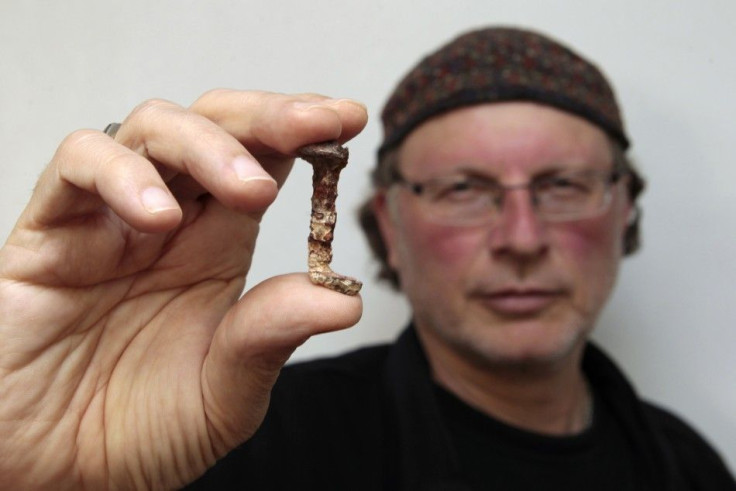'The Jesus Discovery:' Simcha Jacobovici and James Tabor Claim to Have Found the Tomb of Jesus

Archeologist and biblical scholar James Tabor and documentary filmmaker Simcha Jacobvici, claimed to have discovered the tomb of Jesus, detailed in a newly released book, The Jesus Discovery.
In their book the duo details their methodology of their discovery. Using specialized robotic cameras, Tabor and Jacobovici explored a tomb that was approximately 200 feet from the so Jesus- Family Tomb, a crypt supposedly containing bone boxes of Jesus, Mary and Joseph, reported the New York Post.
However, this new tomb contains several newly discovered bones. On the walls are engravings and images of the Resurrection and what Tabor and Jacobovici claim to be the first Christian symbol, the cross. Also on the walls are Greek inscriptions that the pair allegedly said translates too Divine Jehovah, raise up, raise up.
Another engraving appears to be a drawing of a fish with a stick, which is believed to refer to the biblical story of Jonah and the Whale, reported the Daily Mail.
This discovery by Tabor and Jacobovici will no doubt provide thoughtful new dialogue from both ends of the spectrum about one of the most discussed and divisive archaeological findings in recent history, said James Sanna, CEO of Discovery Times Square, where the duo detailed their controversial findings, reported the Post.
However, this new discovery have some people claiming that Jesus was buried alongside Mary Magalene, making the claim he had married and raised a family with her, reported the Daily Mail. Christian theologians disagree with this claim.
The new book, The Jesus Discovery, also has archaeological detractors.
The book is truly much ado about nothing and is a sensationalist presentation of data that are familiar to anyone with knowledge of first-century Jerusalem, Duke University biblical scholar Eric Meyers said on ASOR Blog. Nothing in the book 'revolutionizes our understanding of Jesus or early Christianity,' as the authors and publisher claim, and we may regard this book as yet another in a long list of presentations that misuse not only the Bible but also archaeology,
As for the inscription, another archaeologist claims that the first letter in the word that said to refer to Jehovah, IAEO, appears to be a T rather than an I
This can't be an iota, said Professor Christopher A. Rollston, according to MSNBC. And that's the one letter that has to be there.
© Copyright IBTimes 2024. All rights reserved.











